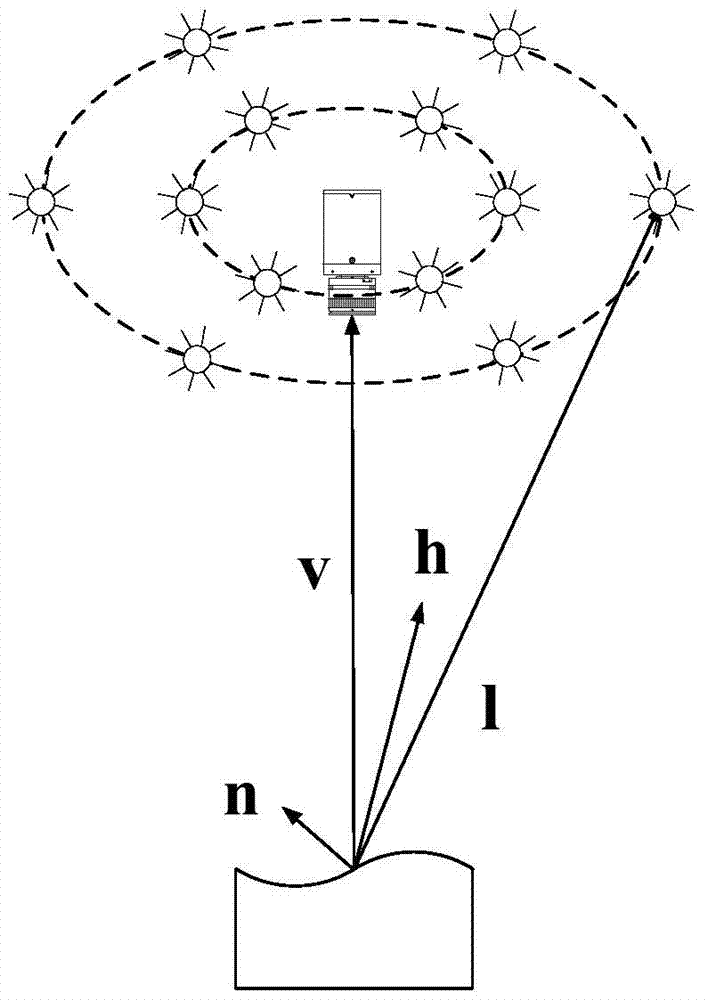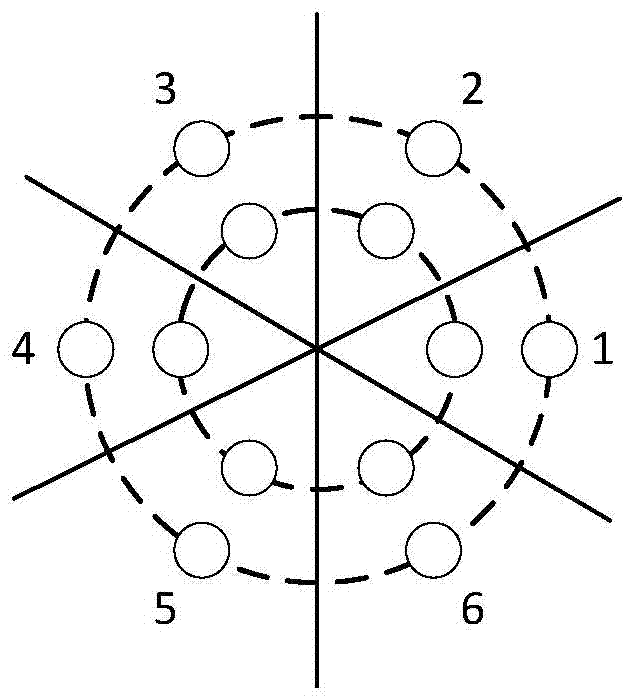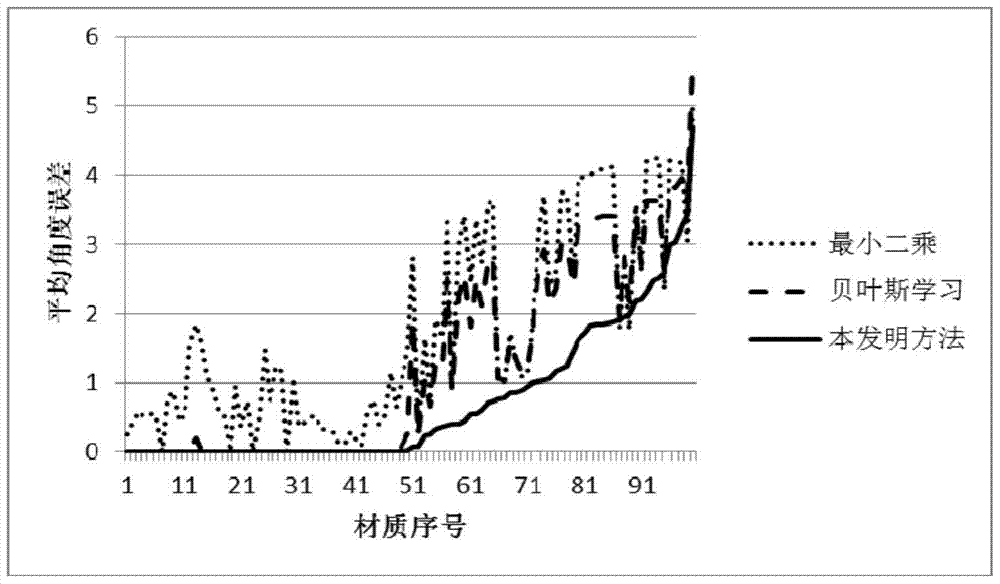Non-Lambertian Object Reconstruction Method Based on Group Sparse Photometric Stereo Vision
A photometric stereo, non-Lambertian technology, applied in 3D modeling, image data processing, instruments, etc., to achieve a wide range of applications, saving construction costs and data acquisition time.
- Summary
- Abstract
- Description
- Claims
- Application Information
AI Technical Summary
Problems solved by technology
Method used
Image
Examples
Embodiment 1
[0057] Such as image 3 As shown, the normal recovery accuracy achieved by the method of the present invention is compared with the existing method on the simulation data. The two methods are the method based on the Lambertian assumption and the method using Bayesian learning. The simulation data is selected from the 100 materials in the MERL database given by W.Matusik et al. [A data-driven reflectance model, ACM Transactions on Graphics22(3), 759–769(2003).] using the Cook Torrance model to simulate combine. Use the drawn image to restore the normal, compare it with the real normal, and calculate the angle error. The reconstruction errors are reordered according to the errors in the present invention from small to large. For most materials, the method of the present invention is better than the traditional method.
Embodiment 2
[0059] Such as Figure 4 As shown, the method of the present invention is used to realize 3D reconstruction of an actual scene and compared with the traditional method. Among them, (a) is a photo of the object to be reconstructed under natural conditions; (b) is a reconstruction result map based on the Lambertian assumption, (c) is a reconstruction result map based on the method of Bayesian learning: (d) is a reconstruction result map using the present invention The reconstruction result plot obtained by the method. From the original photo, it can be found that the highlight spot of the object is wide and has strong highlights. Therefore, the method based on the Lambertian hypothesis produces a large unreasonable bias at the highlights, and even if the Bayesian learning method is used to perform high-light There are still large discontinuities in the detection, but the method of the present invention obtains a relatively smooth reconstruction result, which is more consistent ...
PUM
 Login to View More
Login to View More Abstract
Description
Claims
Application Information
 Login to View More
Login to View More - R&D
- Intellectual Property
- Life Sciences
- Materials
- Tech Scout
- Unparalleled Data Quality
- Higher Quality Content
- 60% Fewer Hallucinations
Browse by: Latest US Patents, China's latest patents, Technical Efficacy Thesaurus, Application Domain, Technology Topic, Popular Technical Reports.
© 2025 PatSnap. All rights reserved.Legal|Privacy policy|Modern Slavery Act Transparency Statement|Sitemap|About US| Contact US: help@patsnap.com



